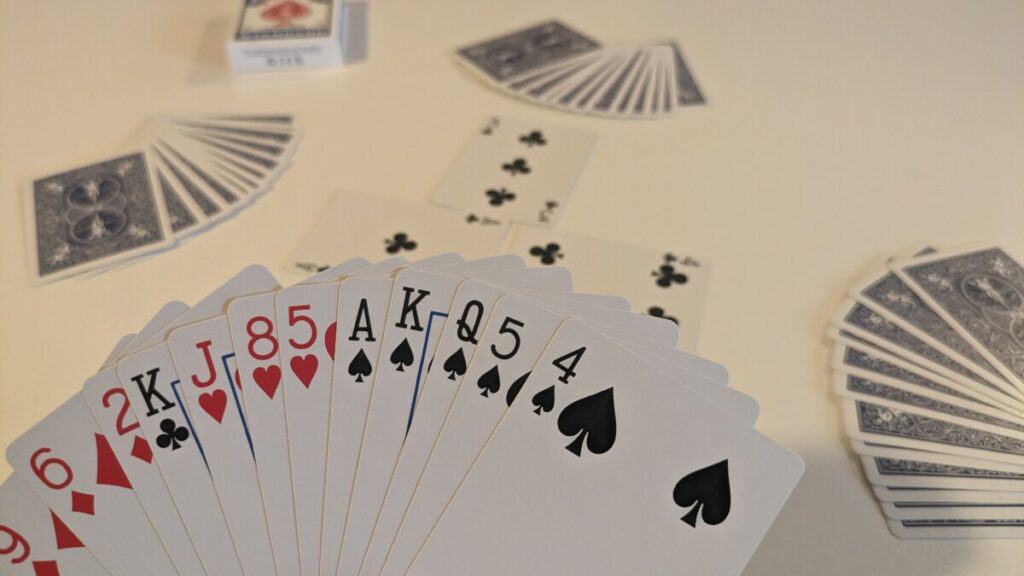
Spades is one of the most popular trick-taking card games in the world, in large part due to its unique blend of teamwork, skill, and luck. I’ve been playing Spades with friends and family for many years, and I’ve picked up quite a few strategies over countless games. These Spades strategies will significantly improve your game and help you to win more often.
In general, the best Spades strategies are to use a disciplined approach to bidding, sabotage your opponents’ contract, and work with your teammate to achieve your mutual goals. Additional strategies include playing Aces before Spades are broken and remembering important cards as they’re played.
Spades is a relatively simple game to learn but it can take a lot of practice to master, even after you’ve found a good partner. Every hand of Spades plays out differently, but by applying the tips and strategies below you’ll be well on your way toward Spades mastery.
Be disciplined with your bidding strategy
Having a fundamental understanding of how to bid is critical to your success in Spades. Every player does things a little bit differently, but it’s important to have a strategy and stick to it until you know what works for you.
In general, you should bid 1 point for every Ace and King of any suit, and for every Spade higher than 5 in your hand. You may raise or lower your bid based on other factors such as how many cards you have in a particular suit or how other players are bidding.
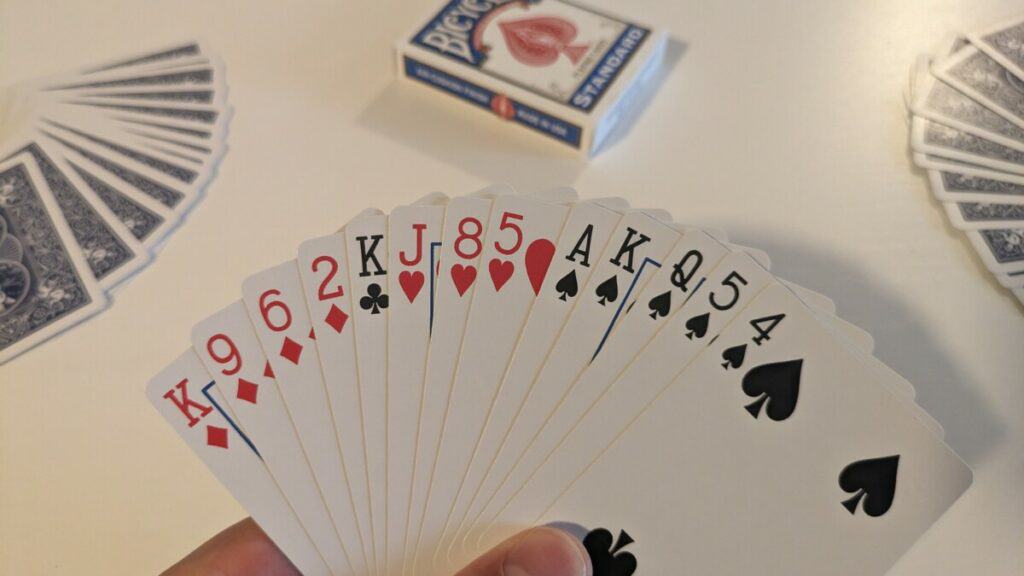
In the hand above, I would likely make a bid of 5. The Ace, King, and Queen of Spades are guaranteed wins, and I am likely going to be able to win with the King of Diamonds once the Ace of Diamonds has played. The King of Clubs is less of a sure thing since it’s my only Club and I’ll be forced to play it on the first hand. If my teammate has the Ace then we still get the trick, but otherwise, we probably won’t. However, I’ll be void of Clubs so I’ll likely be able to play one of my low Spades to win a trick (for 5 total).
You should consider a nil bid (0 points) when you have very few Spades and a lot of lower number cards in other suits. Having a high card in a non-Spade suit is okay as long as it is protected by 3 or 4 other lower cards of that suit.

In the hand above, I would strongly consider making a Nil bid. My highest cards are Queens and Jacks and both of my Spades are low, so I am unlikely to ever be forced to win a trick.
Using a consistent approach to your bidding strategy will help you to build a rapport with your teammate and allow you to make small adjustments over time as you learn what works best for you.
Make conservative bids
When placing a bid on a particular hand it’s very common to feel undecided between two numbers. One might feel too high but the other feels a little too low. In these instances, it is generally best to err on the lower side and make a lower bid.
CHECK IT OUT: I have also written a complete strategy guide to Hearts, another super popular trick-taking game.
The penalty for breaking your contract (failing to meet your team’s combined bid) is much more severe than taking a bag or two. Bags do build up over time and can eventually hurt you, but nothing is more detrimental to your team’s success than consistently breaking your contract.
Consider the bids other players are making
The cards you have in your hand are the most important consideration when making your bid, but remember that you aren’t playing in a vacuum. Other players are also making bids and you should take this into consideration, especially when you bid last.
If the three other players have all made low bids then you should consider raising your normal bid because it is likely that more tricks will be available. This is especially true if a player bids Nil. If a player bids Nil then they are actively trying not to take tricks, which means that your chances of taking a trick are dramatically increased.
Win early tricks with cards you bid on
The best bid you can make is one you can accurately hit. When you take a trick early in the game, try to take it with one of the cards you bid on. I like to take a trick with the ‘worst’ card I made a bid on, leaving me with my better cards to take my remaining tricks.
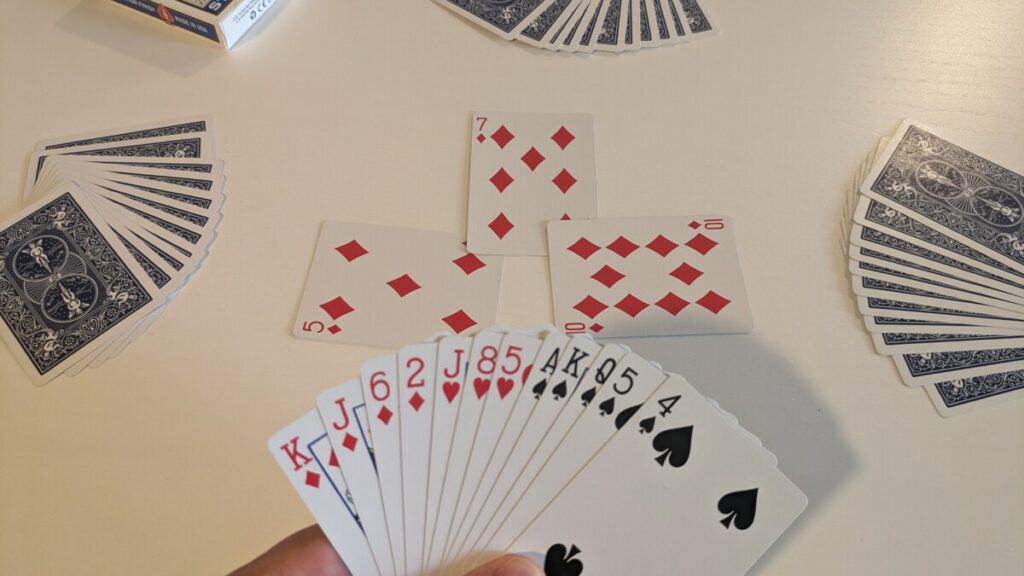
In the example hand above, taking the trick with the Jack of Diamonds seems like it makes a lot of sense. However, I didn’t plan on taking a trick with the Jack so taking this extra trick will likely result in us taking a bag. This might be okay depending on the situation, but if I want to avoid taking a bag it would be best to just take with the King.
The reason for this is to avoid taking bags. If you take a couple of tricks with cards you didn’t bid on, chances are you’ll end up taking more tricks than you originally planned. It’s easy to fall into the trap of taking a trick with your ‘worst’ overall card, but remember that it can end up costing you points in the end.
Collect bags to sabotage your opponents
Sometimes it is well worth taking some bags if it can sabotage your opponents. If the overall effect of you taking a bag results in your opponents losing more points than you, then you should definitely go for it!
CHECK IT OUT: Do you struggle to hold and rearrange 13 cards in your hand? My daughter does, so we got her these really handy curved wooden card holders (link to Amazon) to make things more enjoyable for her.
This usually happens when a team makes high bids and has a very high contact. For example, if a team has a contract of 9 points and you can take a couple of bags to leave them with only 8 tricks, they’ll end up losing 90 points! Unless your bags put you over the 10-bag threshold to lose 100 points, you’re coming looking very good.
Play Aces and Kings before Spades are broken
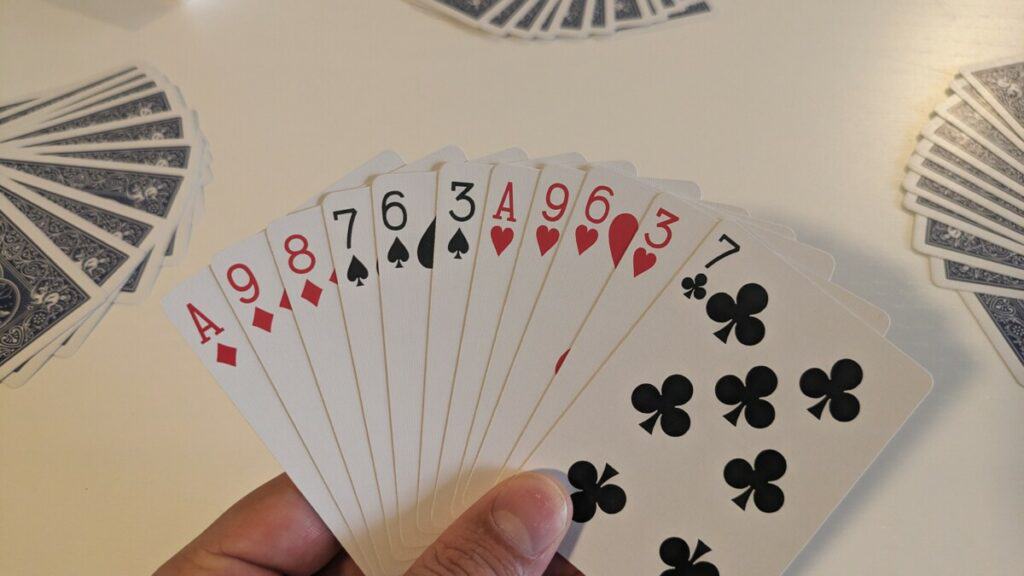
Having some Aces and Kings in your hand is a pretty reliable way to collect tricks, but you have to play them early. Once a player voids a suit and can play their Spades, the Ace and King of that suit become far less powerful.
If you get to lead early in the round, always lead with an Ace if you have it (unless you bid Nil). This is the best and most reliable way to use your Ace to win a trick since it’s still very likely that other players will have at least one card in that suit. Similarly, if you also happen to have the King in that suit you should play it directly after the Ace.
Void a suit early so you can break Spades
Being able to play your Spades to trump other suits is a powerful and reliable way to control how many tricks you take. To this end, you should try to void a suit (get rid of a suit entirely) as soon as possible. If you only have one or two cards in a non-Spade suit, try to play them quickly so you can begin using your Spades.
Experienced players will be on the lookout for this strategy, but that doesn’t mean you shouldn’t employ it anyway. Just because your opponents know you’ve voided a suit doesn’t necessarily mean they’ll be able to do anything about it. It will limit their options and make their task more difficult.
CHECK IT OUT: I have also written a complete strategy guide to Wizard, a unique trick-taking card game that can be played with 3 to 6 people.
Remember important cards as they’re played
Since Spades is played with only one 52-card deck, you can fairly easily keep track of the most important cards that have been played. You don’t have to memorize every card that has been played, but knowing what powerful cards are still in players’ hands is extremely useful.
The cards you should be most mindful of are high Spades (Queen, King, Ace) and the number of Spades played in total. You don’t necessarily have to remember that the 4 of Spades was played, just remember that a Spade has been played and keep a running counter in your head for each hand.
You should also always be on the lookout for cards that are higher than your highest card in each suit. For example, if you have the Queen of Diamonds you should take note when the King and Ace of Diamonds are played because now you know that you have the highest Diamond.
Adjust your strategy to match your bid
As a hand of Spades evolves you will often have to adjust your strategy on the fly. You will inevitably take tricks with cards you didn’t plan on, or fail to win with a card you were relying on. Similarly, you might have to protect your partner’s Nil bid or decide to try to sabotage your opponents’ contract by taking some bags.
Stay adaptable and keep tweaking your strategy for the rest of the hand as things play out. Don’t stay too rigid or you might miss out on opportunities that present themselves.
Be mindful of the number of bags for each team
Both teams will inevitably collect bags as a game of Spades progresses, and how many they acquire will often determine who wins and loses. In my experience, it is pretty rare for a team to win a game of Spades without hitting the 10-bag penalty limit at least once. Keep track of how many bags you and your opponents have so that you can pounce on opportunities as they arise.
For example, it might be worth breaking your contract if you can cause your opponents to take enough bags to put them over the penalty limit.
In a similar vein, if you’re getting close to winning and you have very few bags, bid more conservatively and use your buffer of bags. You don’t have to risk not making your contract by overbidding, but you also don’t have to worry too much about taking too many bags because you have that buffer and you’re likely to win before it becomes a real problem.
Take more risks if you’re well behind
If you’ve fallen behind by a significant margin it’s time to play more aggressively and try to make up that ground. You should be looking to score big chunks of points to get back in the game, and that usually means taking more risks.
You should try to make Nil bids more often on hands that you’d usually be on the fence about. You can also bid blind and try to maneuver your hand to win 100 points. Some variations of Spades also allow for a ‘blind Nil’ bid where it’s possible (but very difficult) to score 200 points in a hand. Sometimes these Hail Mary attempts are your best and only real shot at winning, so keep them in your back pocket!
Lead with a low Spade to lure out other Spades
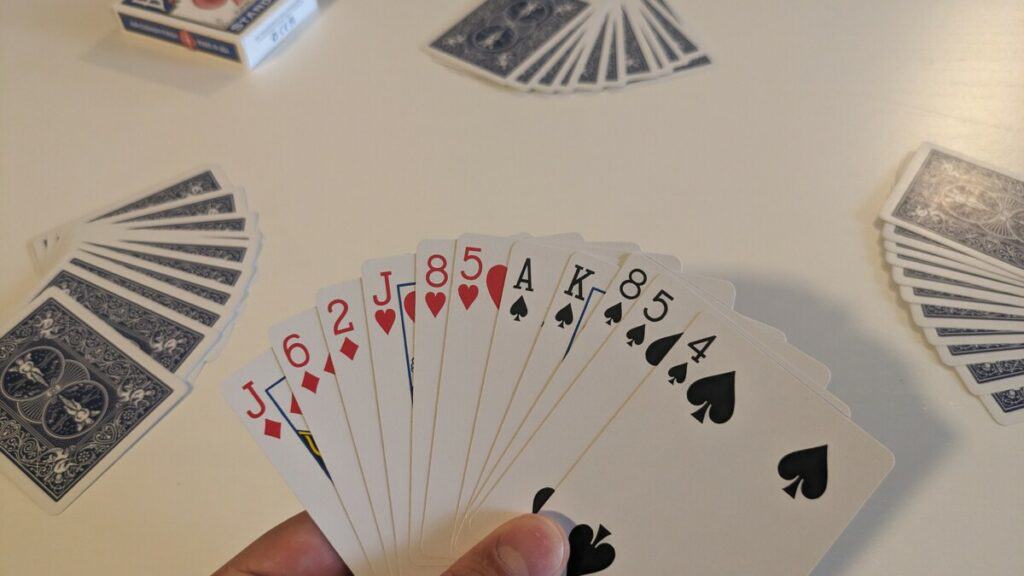
When you have at least 5 Spades in your hand and Spades have already been broken, it’s usually a good idea to lead with a low Spade to force other players to play their Spades. This will often force some higher Spades to be played, making the remaining Spades in your hand much more powerful.
Your low Spade was unlikely to win a trick, so by doing this you’re setting yourself up for future success. Other players won’t have enough (or high enough) Spades to contend with the rest of your Spades, so you can take more tricks at your leisure.
Know your partner’s tendencies
Having a consistent and reliable partner in Spades is like a warm blanket on a cold night. There is no better feeling in the game than when you can read each other’s minds and you’re working in effortless harmony with one another to dominate your opponents.
Pay attention to your partner and how they play. You’ll get to know how aggressive or conservative they bid and how to complement them. You’ll be able to tell how they plan on playing out a hand and you’ll be able to shape your strategy around it. After a game is over, discuss with them what they were thinking in certain situations and make plans for future games.
Help your partner and play as a team
Remember that Spades is a team game and in order to have success you have to work together. Pay attention to the cards your teammate plays and try to feed into their strategy, and remain consistent with your playstyle so that they know what to expect from you.
Avoid taking a trick from your teammate if it’s obvious that they are trying to win it and take control. They may have a sequence of cards to play that will set your team up for success, so you shouldn’t try to undermine them.
If your opponent plays a middle card of a suit when it would seemingly make more sense to play a lower or higher card, that likely means that they are out of that suit. Don’t play another card in that suit hoping that they’ll be able to win the trick!
Thanks for reading! If I missed something or you have your own opinions, please drop a comment below.
What is thr benefit of along out first in hand? Seems to me like you would never want to assume…
Your strategy comments are excellent, well thought out and very helpful! Thank you
You would only get to draw and play a Sanctuary card on turn two of round one if the Region…
Rule question. If in phase one of round one I play a Region card with a Clue symbol at the…

Leave a Reply